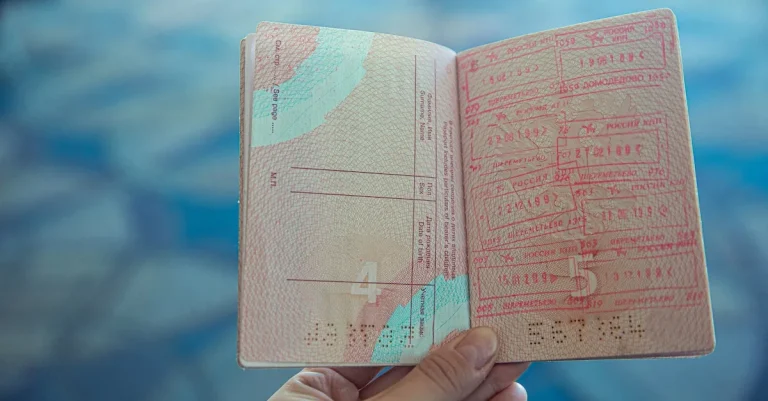The Best New Yorker Covers Through The Years
Since its founding in 1925, The New Yorker has featured iconic and thought-provoking covers that capture the cultural zeitgeist. If you’re short on time, here’s a quick answer: Some of the best and most iconic New Yorker covers include Saul Steinberg’s View of the World from 9th Avenue, Art Spiegelman’s Valentine’s Day Kiss featuring the World Trade Center towers, Maira Kalman’s New Yorkistan cover following 9/11, and Barry Blitt’s satirical 2008 cover depicting Barack and Michelle Obama.
In this comprehensive article, we will take a deep dive into some of the most memorable, impactful and artistically brilliant New Yorker covers over the decades. We will provide background on the artists, context for the covers, and analysis of why these particular images resonated so strongly. Whether whimsical, serious or satirical in nature, the covers we will explore visually encapsulated important cultural moments and revealed the talented artists behind them.
Saul Steinberg’s Iconic View of the World from 9th Avenue (1976)
Saul Steinberg’s illustration, “View of the World from 9th Avenue,” is one of the most iconic covers in the history of The New Yorker magazine. Published in 1976, this cover perfectly captures the New Yorker’s unique perspective on the world and its ability to satirize American culture.
A Witty Satire on New York City
Steinberg’s cover depicts a map of the world as seen from the perspective of someone standing on 9th Avenue in Manhattan. The illustration humorously exaggerates the New Yorker’s reputation for being focused on the city and its inhabitants, with the rest of the world appearing small and insignificant.
The cover is filled with witty details, such as the Empire State Building towering over the rest of the world and the Hudson River dividing the city from the rest of the country. It offers a humorous commentary on the New Yorker’s often insular view of the world.
An Enduring Symbol of New Yorker’s Satirical Edge
Since its publication, Steinberg’s cover has become an enduring symbol of the New Yorker’s satirical edge and its ability to capture the essence of New York City. It has been widely recognized and celebrated, and has even been parodied and referenced in various forms of media.
The cover continues to resonate with readers, reminding us of the New Yorker’s unique blend of wit, humor, and social commentary. It serves as a reminder of the magazine’s longstanding tradition of using art to provide a fresh and thought-provoking perspective on the world.
Inspiring Future Artists
Saul Steinberg’s cover has also had a significant impact on the world of art and illustration. It has inspired countless artists and designers to push the boundaries of their own creativity and explore new ways of representing the world around them.
Steinberg’s unique style, characterized by bold lines and whimsical imagery, continues to influence artists to this day. His ability to distill complex ideas into simple yet powerful visual statements is a testament to his genius and has left a lasting impression on the world of illustration.
Art Spiegelman’s The Kiss Featuring the Twin Towers (1993)
One of the most iconic and powerful covers ever published by The New Yorker is Art Spiegelman’s “The Kiss” featuring the Twin Towers. This cover, which was published on September 24, 2001, just days after the tragic events of 9/11, captures the profound impact of the terrorist attacks on the World Trade Center.
The cover depicts a black and white illustration of a man and a woman engaged in a passionate kiss, with the Twin Towers in the background. The image is haunting and evocative, symbolizing both love and loss.
Spiegelman, who is best known for his graphic novel “Maus,” created this cover as a tribute to the victims and a reflection of the nation’s collective grief.
The simplicity of the artwork, combined with its emotional resonance, made it an instant classic. The image resonated with people all over the world, capturing the raw emotions and the sense of unity that emerged in the aftermath of the tragedy.
It became a symbol of hope and resilience, reminding us of the power of love and the strength of the human spirit.
Spiegelman’s cover also sparked a conversation about the role of art in times of crisis. It demonstrated how a single image can encapsulate complex emotions and serve as a powerful form of expression. The cover was widely praised for its artistic merit and its ability to capture the zeitgeist of the moment.
Since its publication, “The Kiss” has been reproduced and displayed in various forms, including prints, posters, and exhibitions. It continues to be recognized as one of the most powerful and memorable covers in the history of The New Yorker.
To learn more about Art Spiegelman and his work, you can visit his official website at https://www.artspiegelman.com/.
Maira Kalman’s New Yorkistan Cover Post 9/11 (2001)
One of the most iconic and memorable New Yorker covers of all time is Maira Kalman’s New Yorkistan cover, created in the aftermath of the tragic events of 9/11 in 2001. This cover, which appeared on the magazine’s November 26th issue, brilliantly captures the resilience and spirit of New Yorkers in the face of adversity.
After the September 11th attacks, New York City was forever changed. The city mourned the loss of thousands of lives and grappled with the immense grief and trauma caused by the terrorist acts. In the midst of this darkness, Maira Kalman’s cover brought a sense of hope and humor to the city.
The cover depicts a whimsical map of “New Yorkistan,” a fictional land that playfully represents the diverse neighborhoods and cultures of New York City. It features humorous illustrations and clever wordplay, showcasing the unique spirit and energy of the city.
This cover served as a reminder that even in times of tragedy, New Yorkers can find strength in their shared identity and resilience.
The New Yorkistan cover resonated with readers and quickly became an iconic symbol of New York City’s spirit. It captured the attention of people around the world and became a symbol of hope and resilience in the face of adversity.
The cover was praised for its creativity, wit, and ability to capture the essence of New York City.
Maira Kalman’s New Yorkistan cover is a testament to the power of art and creativity to heal and inspire. It reminds us that even in the darkest of times, humor and resilience can help us find strength and unity.
This cover will forever be remembered as a shining example of the indomitable spirit of New Yorkers.
Barry Blitt’s The Politics of Fear Cover (2008)
One of the most iconic and controversial covers of The New Yorker magazine is Barry Blitt’s “The Politics of Fear” cover from 2008. This cover depicts then-presidential candidate Barack Obama dressed in Muslim attire, fist-bumping his wife Michelle Obama, who is shown dressed as a militant.
The cover was published during a time of intense political division and controversy surrounding Obama’s candidacy.
The Controversy:
Barry Blitt’s cover immediately sparked a firestorm of criticism and debate. Many people viewed the cover as a racist and offensive portrayal of Obama, perpetuating harmful stereotypes. Critics argued that it played into the fears and misinformation surrounding Obama’s faith and patriotism.
On the other hand, some defended the cover as a satirical commentary on the misinformation and fear-mongering that was present during the 2008 election. They argued that Blitt was using satire to expose and criticize the negative tactics used in political campaigns.
Blitt’s Intent:
In response to the controversy, Barry Blitt explained that his intention with the cover was to satirize the ridiculous and unfounded fears that were being propagated about Obama during the election. He wanted to highlight the absurdity of these claims by portraying them in a comical and exaggerated manner.
Blitt’s cover sparked a larger conversation about the role of satire in political commentary and the responsibility of artists to consider the potential impact of their work. It also raised questions about the power of visual imagery and the different interpretations that can be derived from it.
The Legacy:
While the controversy surrounding Barry Blitt’s cover was significant, it also served as a powerful reminder of the importance of freedom of expression and the ability of art to provoke thought and conversation.
The cover continues to be discussed and analyzed as a significant moment in the history of political satire.
The New Yorker magazine has a long history of using its covers to tackle controversial and thought-provoking topics. Whether through political commentary, social issues, or cultural references, the magazine’s covers have become a form of artistic expression and a reflection of the times we live in.
For more information on Barry Blitt’s “The Politics of Fear” cover and other notable New Yorker covers, you can visit The New Yorker website.
Other Notable and Impactful New Yorker Covers
Over the years, The New Yorker has consistently produced thought-provoking and impactful covers that have captured the attention of readers around the world. While there are countless covers that have left a lasting impression, here are three noteworthy ones that have sparked conversations and resonated with audiences:
Edward Sorel’s Thanksgiving Turkey Pardon Cover (2001)
In 2001, Edward Sorel created a cover for The New Yorker that depicted a turkey receiving a presidential pardon on Thanksgiving. This cover, titled “Turkey Liberation Front,” was a satirical take on the tradition of the President pardoning a turkey during the holiday season.
Sorel’s artwork captured the humor and irony of the situation, prompting readers to reflect on the absurdity of some societal customs. The cover was widely praised for its cleverness and wit, showcasing Sorel’s ability to use art as a means of social commentary.
Richard McGuire’s Iraq War Cover (2004)
In 2004, artist Richard McGuire created a cover for The New Yorker that depicted a map of the Middle East with the words “Iraq War” written across it. The simplicity of the cover, combined with the powerful message it conveyed, made it a standout piece.
McGuire’s artwork served as a reminder of the ongoing conflict and the impact it had on the lives of countless individuals. The cover sparked conversations about the war and its consequences, highlighting the power of visual art to provoke thought and inspire dialogue.
Bob Staake’s Sandy Hook Shooting Cover (2012)
In 2012, Bob Staake created a cover for The New Yorker that addressed the tragic shooting at Sandy Hook Elementary School in Newtown, Connecticut. The cover depicted an empty classroom with small, empty desks symbolizing the young lives lost in the tragedy.
Staake’s artwork captured the somberness and grief associated with the event, serving as a powerful tribute to the victims. The cover resonated with readers, reminding them of the importance of addressing issues surrounding gun violence and advocating for change.
These covers are just a small glimpse into the vast collection of impactful and thought-provoking artwork that has graced the pages of The New Yorker over the years. Each cover tells a story and evokes emotions, showcasing the power of visual art to capture the essence of a moment and spark meaningful conversations.
Conclusion
Throughout its nearly 100-year history, The New Yorker has consistently produced covers that are both visually arresting and culturally penetrating. The covers we explored revealed how the magazine’s art has provided perspective on events great and small, serious and lighthearted. From Steinberg’s brilliant encapsulation of New York City myopia to Art Spiegelman’s haunting 9/11 lament, New Yorker covers have provided iconic snapshots of American life. The magazine continues this legacy today, showcasing diverse artists and viewpoints. For any lover of art, culture and journalism, few pleasures compare to anticipating the next unforgettable New Yorker cover.








